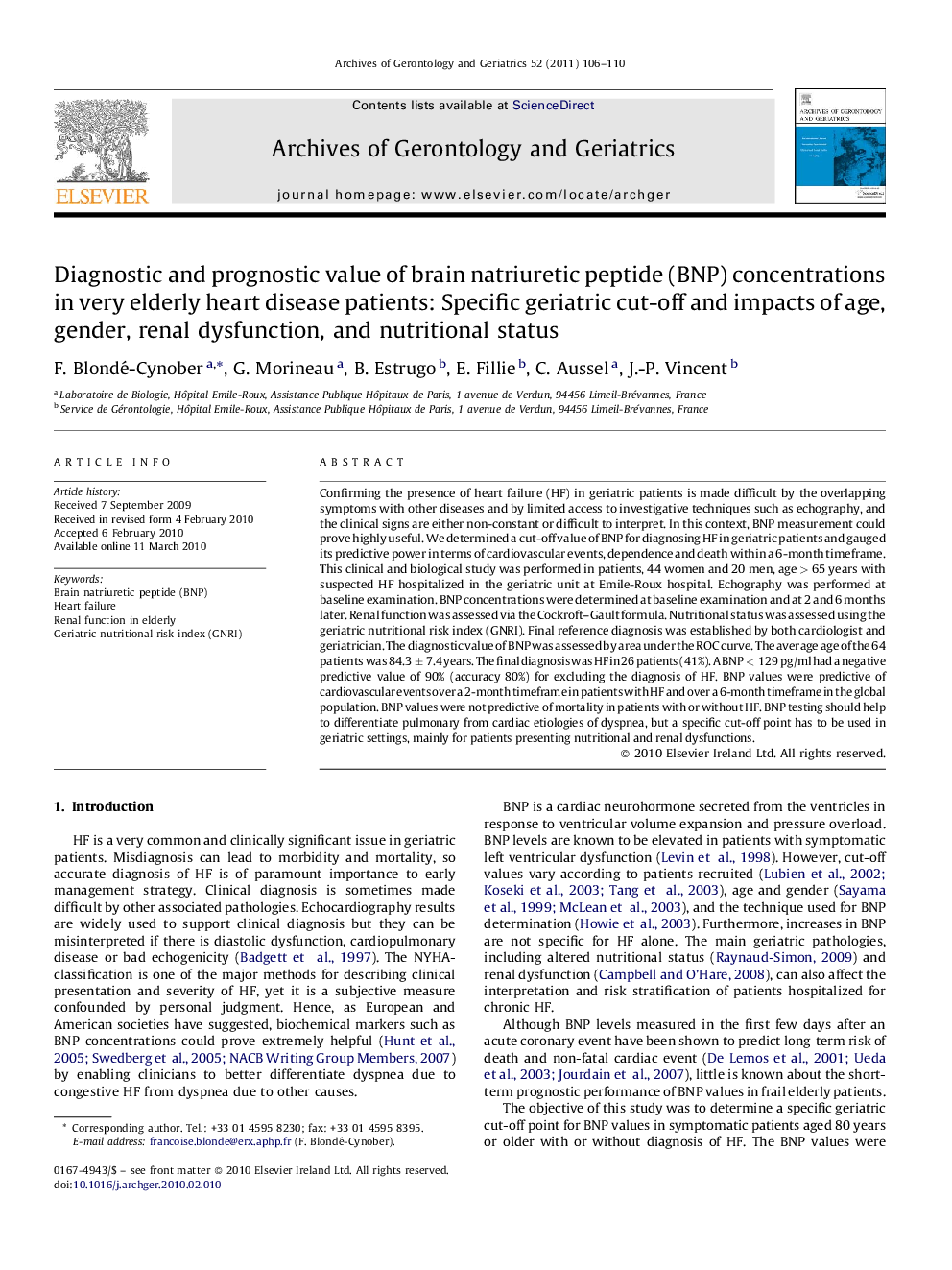| Article ID | Journal | Published Year | Pages | File Type |
|---|---|---|---|---|
| 1903604 | Archives of Gerontology and Geriatrics | 2011 | 5 Pages |
Confirming the presence of heart failure (HF) in geriatric patients is made difficult by the overlapping symptoms with other diseases and by limited access to investigative techniques such as echography, and the clinical signs are either non-constant or difficult to interpret. In this context, BNP measurement could prove highly useful. We determined a cut-off value of BNP for diagnosing HF in geriatric patients and gauged its predictive power in terms of cardiovascular events, dependence and death within a 6-month timeframe. This clinical and biological study was performed in patients, 44 women and 20 men, age > 65 years with suspected HF hospitalized in the geriatric unit at Emile-Roux hospital. Echography was performed at baseline examination. BNP concentrations were determined at baseline examination and at 2 and 6 months later. Renal function was assessed via the Cockroft–Gault formula. Nutritional status was assessed using the geriatric nutritional risk index (GNRI). Final reference diagnosis was established by both cardiologist and geriatrician. The diagnostic value of BNP was assessed by area under the ROC curve. The average age of the 64 patients was 84.3 ± 7.4 years. The final diagnosis was HF in 26 patients (41%). A BNP < 129 pg/ml had a negative predictive value of 90% (accuracy 80%) for excluding the diagnosis of HF. BNP values were predictive of cardiovascular events over a 2-month timeframe in patients with HF and over a 6-month timeframe in the global population. BNP values were not predictive of mortality in patients with or without HF. BNP testing should help to differentiate pulmonary from cardiac etiologies of dyspnea, but a specific cut-off point has to be used in geriatric settings, mainly for patients presenting nutritional and renal dysfunctions.
